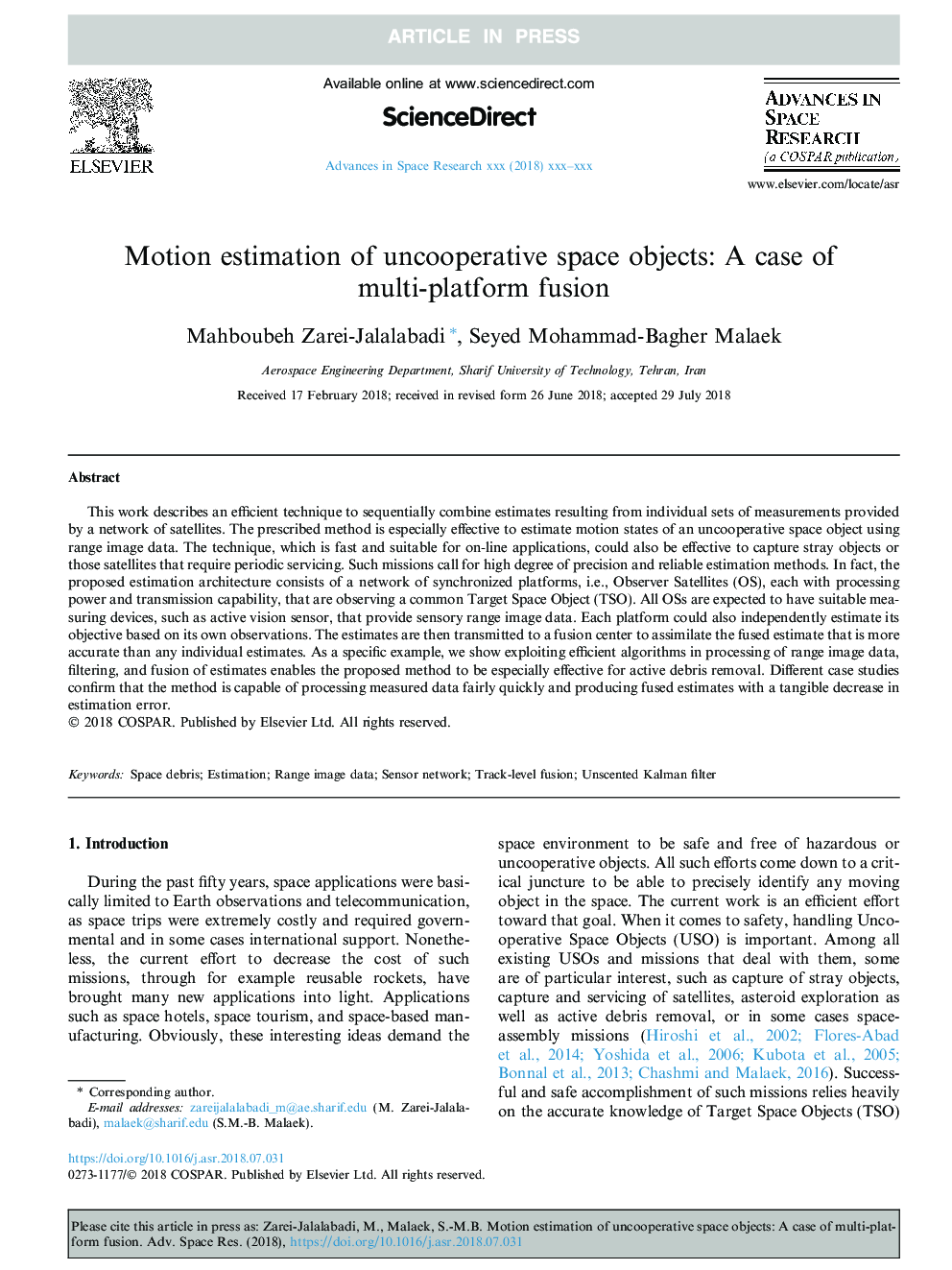| Article ID | Journal | Published Year | Pages | File Type |
|---|---|---|---|---|
| 11019697 | Advances in Space Research | 2018 | 14 Pages |
Abstract
This work describes an efficient technique to sequentially combine estimates resulting from individual sets of measurements provided by a network of satellites. The prescribed method is especially effective to estimate motion states of an uncooperative space object using range image data. The technique, which is fast and suitable for on-line applications, could also be effective to capture stray objects or those satellites that require periodic servicing. Such missions call for high degree of precision and reliable estimation methods. In fact, the proposed estimation architecture consists of a network of synchronized platforms, i.e., Observer Satellites (OS), each with processing power and transmission capability, that are observing a common Target Space Object (TSO). All OSs are expected to have suitable measuring devices, such as active vision sensor, that provide sensory range image data. Each platform could also independently estimate its objective based on its own observations. The estimates are then transmitted to a fusion center to assimilate the fused estimate that is more accurate than any individual estimates. As a specific example, we show exploiting efficient algorithms in processing of range image data, filtering, and fusion of estimates enables the proposed method to be especially effective for active debris removal. Different case studies confirm that the method is capable of processing measured data fairly quickly and producing fused estimates with a tangible decrease in estimation error.
Related Topics
Physical Sciences and Engineering
Earth and Planetary Sciences
Space and Planetary Science
Authors
Mahboubeh Zarei-Jalalabadi, Seyed Mohammad-Bagher Malaek,
